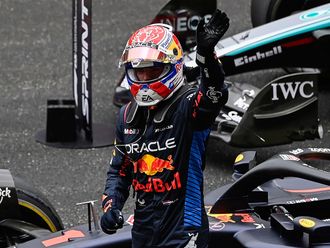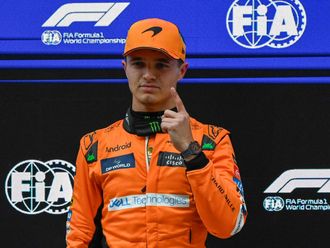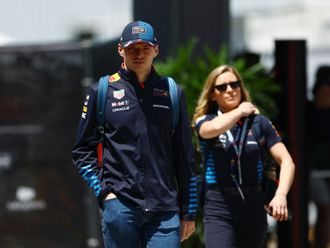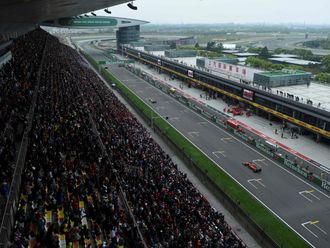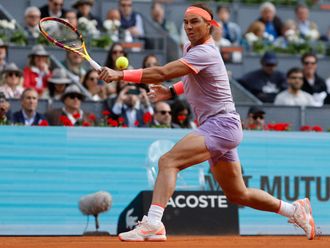Dubai: More safety measures will be brought into effect for next year’s UIM XCAT World Series after recent tests.
Bob Wartinger, former powerboat world champion-turned safety consultant and representative of the UIM medical and safety committee, was in Dubai and Abu Dhabi for the final two rounds of the 2015 season last month to highlight areas of improvement for next year.
And there was no better illustration of just how important safety measures are than when the world witnessed the Six boat of Matteo Nicolini and Tomaso Polli do a submarine dive during the Dubai Grand Prix.
“It stopped within a boat’s length so that’s about 10m when they were doing 140 or 150km/hr. That is a tremendous load on the human body,” said Wartinger. “So we need to get the head and neck restraints on — we’ll see those for next year. We’ll see seats that hug and support the body better, and there may be some discussions about helmet improvements that will be agreed on as a standard.
“While I’ve been in Dubai I’ve been crawling through boats to have a look and I brought head and neck restraints and devices that are being used in other motorsports that could work here so the XCATs can see what they look like.
“Then we’ve been using the dunk tester practice to see that they work in the water and yes, they do. Now there’s a break and the boats won’t run until the start of next season, so there’s time to make some significant improvements for the 2016 XCAT World Championship.”
He added: “XCAT racing has a good safety record but I believe the drivers can perform better and have less fatigue with slightly better seats, seat belts and better belt placement for example. We have several ideas for sure — some will become mandatory and some will just be recommendations for the future, like better air systems inside the masks and full face helmets.
“Most of these changes are easy to implement — and will make a big difference to the safety aspect of this extreme sport,” said Wartinger who added that future testing will also be done to better understand the forces on the boat during racing to be able to check the strength of the structure of the boats accordingly. “If we get that knowledge it will help tremendously,” he said.


